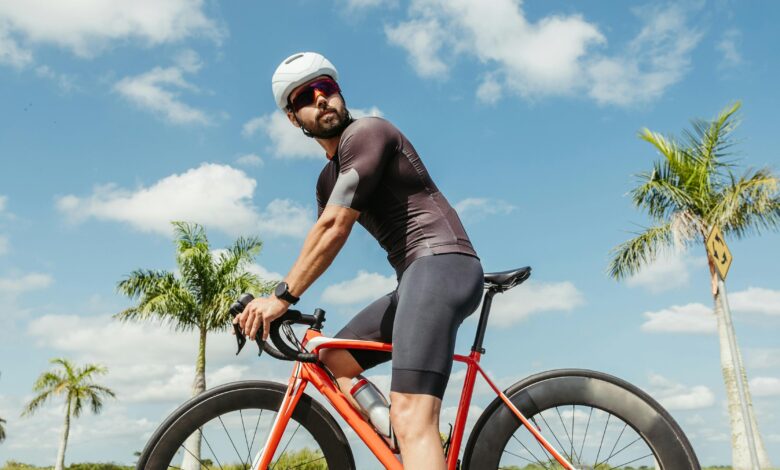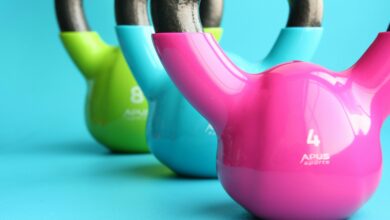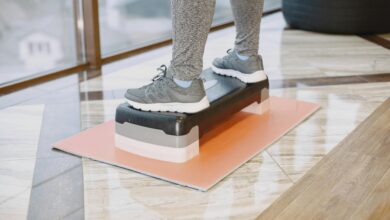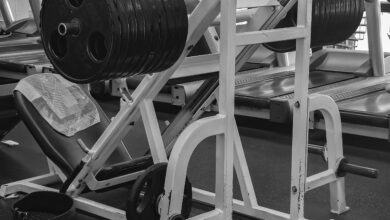How to Choose the Right Exercise Bike

Exercise bikes have become one of the most popular pieces of home fitness equipment, offering a low-impact, effective way to improve cardiovascular health, burn calories, and strengthen muscles. With so many options available on the market—ranging from budget-friendly models to high-end smart bikes—it can be overwhelming to find the right one for your needs. This guide will walk you through the key factors to consider when choosing an exercise bike, ensuring you make an informed decision that aligns with your fitness goals, space constraints, and budget.
1. Determine Your Fitness Goals
Before purchasing an exercise bike, it’s important to identify what you want to achieve with your workouts. Different types of exercise bikes cater to specific fitness objectives:
A. Cardiovascular Endurance
If your primary goal is to improve heart health and stamina, look for a bike with adjustable resistance levels and pre-programmed workouts that simulate interval training or hill climbs.
B. Weight Loss
For calorie burning and fat loss, prioritize bikes with performance tracking features (e.g., calorie counters, heart rate monitors) and engaging workout programs to keep you motivated.
C. Muscle Toning
To target lower-body muscles like quads, hamstrings, calves, and glutes, opt for a bike with a heavier flywheel and ergonomic design that mimics outdoor cycling.
D. Rehabilitation or Low-Impact Exercise
If you’re recovering from an injury or need a joint-friendly workout, choose a recumbent bike, which provides back support and reduces strain on knees and hips.
2. Understand the Types of Exercise Bikes
There are three main types of exercise bikes, each with unique features and benefits:
A. Upright Bikes
- Design: Resemble traditional road bikes with a vertical seating position.
- Pros: Compact, affordable, and great for full-body engagement.
- Cons: May cause discomfort during long sessions due to lack of back support.
- Best For: Users who prefer a more intense workout and have limited space.
B. Recumbent Bikes
- Design: Feature a reclined seat with a backrest and pedals positioned in front.
- Pros: Comfortable, supportive, and ideal for seniors or those with mobility issues.
- Cons: Bulkier and less portable than upright bikes.
- Best For: Individuals seeking a relaxed, low-impact workout.
C. Spin Bikes
- Design: Mimic studio spin classes with a heavy flywheel and aggressive riding posture.
- Pros: Excellent for high-intensity interval training (HIIT), durable, and customizable resistance.
- Cons: Can be noisy and uncomfortable for beginners.
- Best For: Enthusiasts looking for a challenging, gym-like experience.
3. Consider Key Features
When evaluating exercise bikes, pay attention to these essential features:
A. Resistance System
- Magnetic Resistance: Smooth and quiet; ideal for home use.
- Friction Resistance: More affordable but noisier and requires maintenance.
- Adjustability: Ensure the bike offers multiple resistance levels to accommodate varying intensities.
B. Flywheel Weight
The flywheel determines the smoothness and stability of the ride:
- Lighter flywheels (around 8–15 lbs): Suitable for casual users.
- Heavier flywheels (20+ lbs): Provide a smoother, more realistic cycling experience.
C. Console and Technology
Modern exercise bikes come equipped with advanced consoles and connectivity options:
- Performance Metrics: Look for displays showing speed, distance, time, calories burned, and heart rate.
- Smart Features: Integration with apps like Peloton, Zwift, or MyFitnessPal enhances motivation and variety.
- Touchscreens: Larger screens allow for immersive experiences, such as virtual rides or guided classes.
D. Comfort and Ergonomics
- Seat Design: Adjustable, padded seats reduce discomfort during long workouts.
- Handlebars: Multi-grip handlebars provide versatility and support different postures.
- Pedals: Look for secure straps or clip-in options for stability.
E. Noise Level
If you live in a shared space or have family members nearby, choose a bike with minimal noise output. Magnetic resistance systems tend to be quieter than friction-based ones.
4. Evaluate Space and Portability
Consider how much room you have available and whether the bike can be easily moved or stored:
A. Footprint
Measure your designated workout area to ensure the bike fits comfortably. Upright and spin bikes typically take up less space than recumbent models.
B. Folding Options
Some bikes are designed to fold down for compact storage, making them ideal for small apartments or multipurpose rooms.
C. Wheels
Look for built-in transport wheels if you plan to move the bike frequently.
5. Set a Budget
Exercise bikes range widely in price, from under $200 for basic models to over $2,000 for premium smart bikes. Here’s a breakdown of pricing tiers:
A. Budget-Friendly (<$500)
- Basic functionality with manual resistance.
- Suitable for beginners or occasional users.
- Limited durability and tech features.
B. Mid-Range ($500–$1,500)
- Improved build quality and magnetic resistance.
- Enhanced consoles with Bluetooth connectivity.
- Good balance of value and performance.
C. High-End (>$1,500)
- Advanced smart bikes with interactive screens and subscription-based content.
- Durable construction and superior comfort.
- Ideal for serious cyclists or tech enthusiasts.
Set a budget based on your needs and avoid overspending on unnecessary features.
6. Test Before You Buy
Whenever possible, test the bike before purchasing to ensure it meets your expectations:
- Comfort: Sit on the saddle and adjust the settings to see if it feels right.
- Stability: Pedal at various intensities to check for wobbling or instability.
- Ease of Use: Navigate the console and controls to confirm they’re intuitive.
If buying online, read customer reviews and check return policies in case the bike doesn’t meet your standards.
7. Check Warranty and Customer Support
A solid warranty reflects the manufacturer’s confidence in their product. Look for coverage on:
- Frame: Typically 5–10 years.
- Parts: Usually 1–3 years.
- Labor: Often 1 year.
Additionally, research the brand’s reputation for customer service and availability of replacement parts.
8. Popular Brands to Consider
Here are some reputable brands known for quality exercise bikes:
- Peloton: Known for its interactive spin bikes and live classes.
- Schwinn: Offers affordable yet reliable models for home use.
- NordicTrack: Combines innovative technology with robust designs.
- Sunny Health & Fitness: Budget-friendly options with decent features.
- Keiser: Premium commercial-grade bikes favored by gyms.




